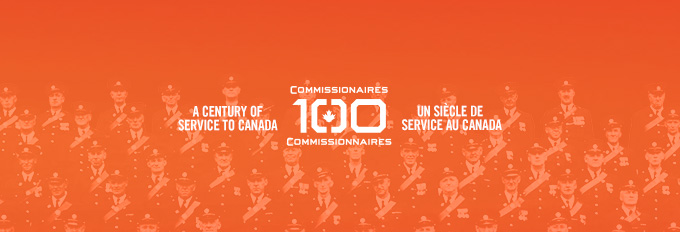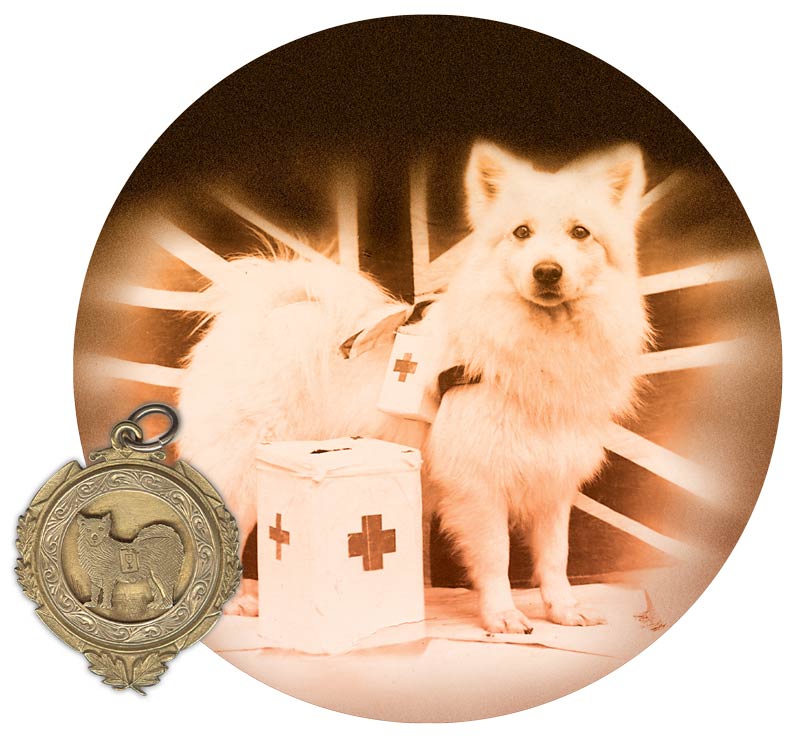
Muggins was an expert fundraiser, collecting more than $21,000 for veterans’ associations and the Red Cross during the two world wars (about $400,000 today). He was also a highly decorated volunteer, receiving eight medals and international acclaim for his efforts. Most incredibly, Muggins was, in fact, a dog.
Boasting a fluffy white coat, this purebred Spitz was a staple in downtown Victoria during the 1910s. When he died of pneumonia in 1920 at the age of seven, he was taken to a skilled taxidermist who kept his figure intact, in tribute to his war efforts. During WW II, his mount was displayed at a couple of locations in Victoria to raise money once again for the war effort. By the mid-1950s, however, Muggins was largely forgotten and had been shuffled between so many hands that by the time historians tried to locate his likeness, Muggins had disappeared. Until recently.
Discovered in the shed of a resident in Victoria’s View Royal suburb, Muggins’ mount was restored to its former glory and is set to be displayed at B.C.’s Government House, the official residence of the province’s lieutenant governor, this summer.
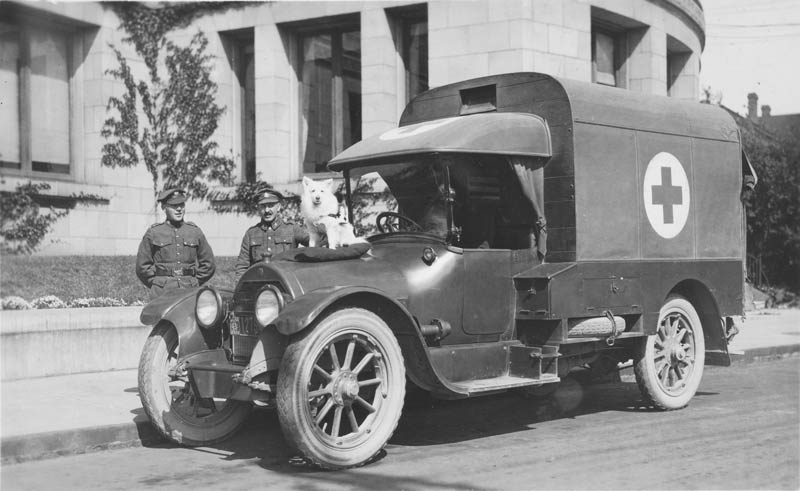
Muggins was born in 1913 into a wealthy household. Passed from famous Calgary entrepreneur and philanthropist William Roper Hull to members in the Hull family, Muggins finally found himself with Beatrice Woodward, a British woman living in Victoria with a fierce commitment to activism and community.
Though experts can only speculate how Woodward was able to train Muggins so well, the dog soon became part of the essential framework for Red Cross WW I donations. With two Red Cross tins strapped on his back, Muggins was often found near the city’s Empress Hotel and at the wharf, seeking donations from locals with the swift wag of his tail.
Dedicated to the cause, Muggins sometimes went to work alone, boarding ferries and freightliners to nudge gamblers and visitors for a few coins. Raising thousands of dollars for the Red Cross, Muggins became a famed mascot, meeting the Prince of Wales and famous Canadian general Arthur Currie.
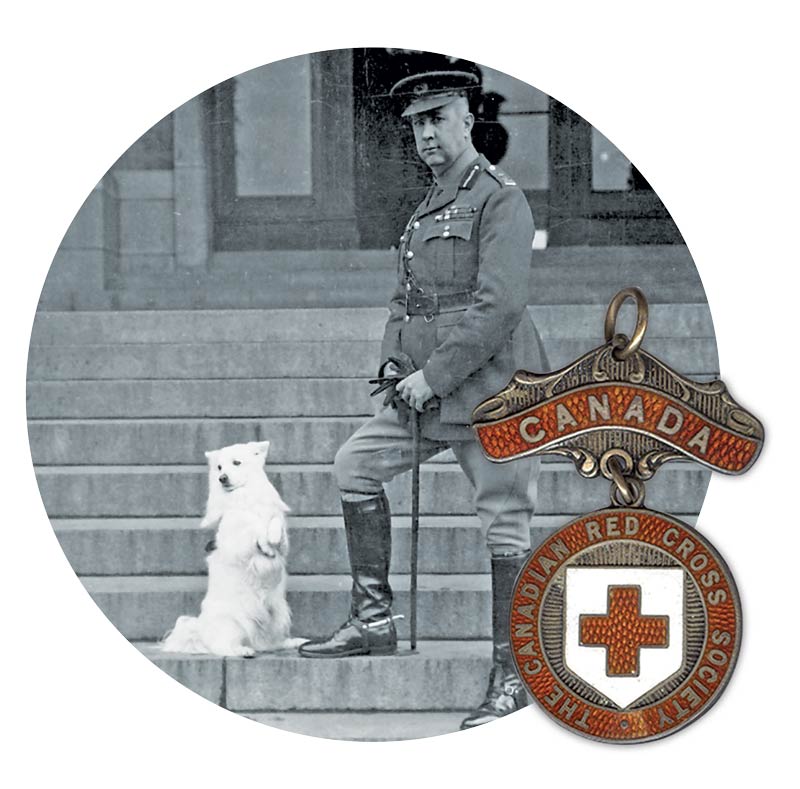
According to Grant Hayter-Menzies, author of Muggins: The Life and Afterlife of a Canadian Canine War Hero, the dog was known to show visible signs of distress when he felt like his tins weren’t heavy enough and didn’t have enough coins. “He was a war hero even though he never went on the battlefield,” he said.
While drafting a Red Cross history project, retired military police officer Paul Jenkins became fascinated with Muggins’ life, but had little hope of locating the dog’s missing mount. Still, the Red Cross published appeals calling for any information on the pup’s whereabouts. And one day, they got a lead to that shed in View Royal.
Hayter-Menzies funded the mount’s restoration with money from his book’s royalties and Muggins’ restored figure now lives in Jenkins’ workshop in a plexiglass case. While Muggins will be displayed at Government House temporarily this summer, Jenkins is still trying to find a forever home for it.
To Jenkins, the importance of Muggins can’t be overstated: “Muggins was about bringing hope in a polarized world.”
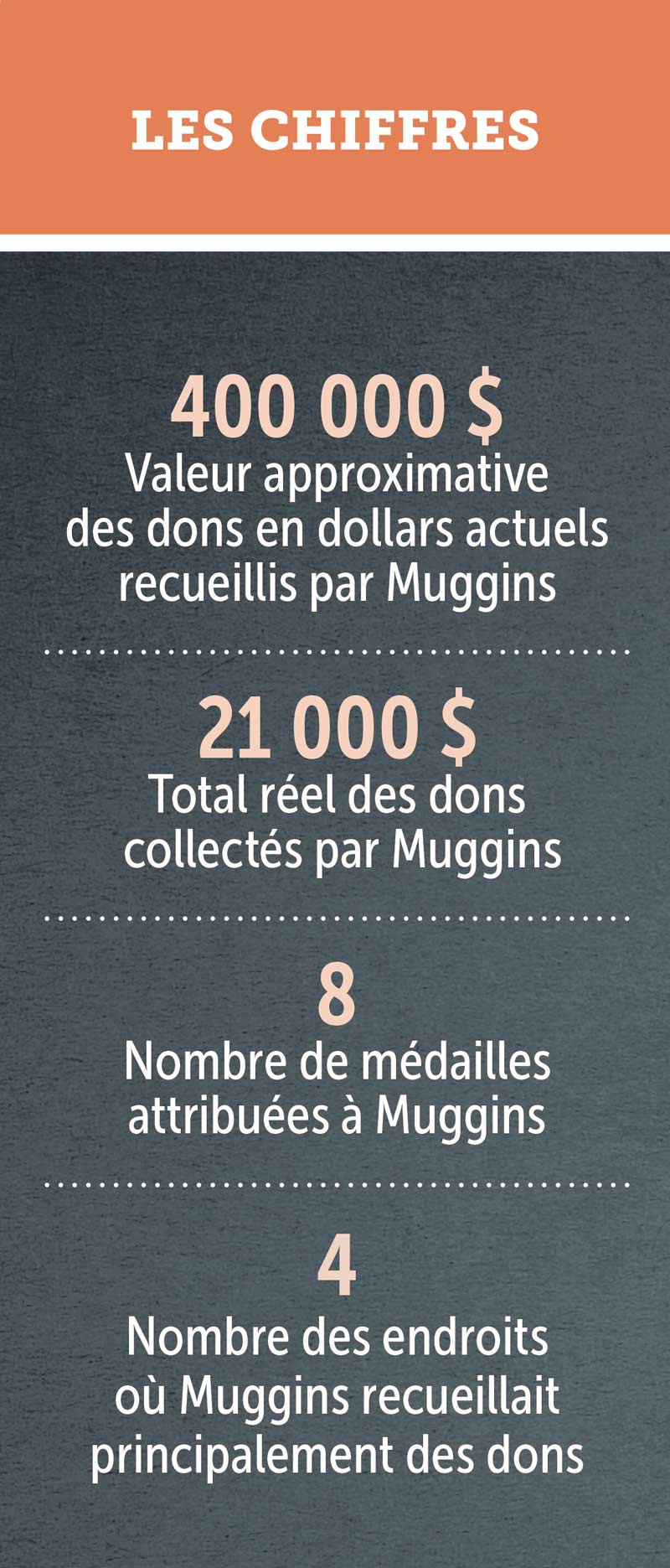
Advertisement






